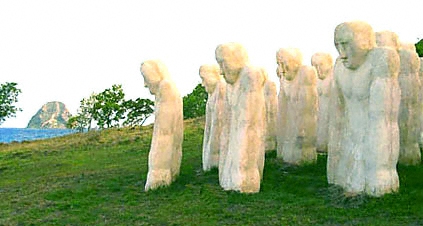 |
 |
Anse Caffard Memorial near Diamant commemorates the tragic loss of an illegal slave ship in April, 1830.
|
|
|||
|
Columbus sighted Martinique in 1493, but did not go ashore until another voyage in 1502. At that time, the island was inhabited by the Carib Indians who had already exterminated the Arawaks. Columbus named the island Martinica in honor of St. Martin. The French arrived to claim the island and begin permanent settlement there in 1635. They began to cultivate sugar cane and import slaves from Africa. As forests were cleared to make room for sugar plantations, fierce battles with the Carib Indians ensued. With the treaty of 1660, the Caribs agreed to occupy only the Atlantic side of Martinique. This peace was short-lived, however, and they were exterminated or forced off the island shortly thereafter. In 1762, the English occupied the island, but returned it the following year in exchange for Canada. They invaded and held the island once again from 1794 to 1815, when it was returned to the French. In 1848, Victor Schoelcher, a French minister for overseas possessions, convinced the government to sign an Emancipation Proclamation ending slavery in the French West Indies. On March 8, 1902, came the most devastating natural disaster in Caribbean history; the Mont Pelée volcano erupted, destroying the city of St. Pierre and claiming the lives of all but one of its 30,000 inhabitants. As a result, the capital was permanently moved to Fort-de-France. |
|||
| Back to Helpful Info Page for Martinique | |||
| Back to Main Page for Martinique |
| Home Page | About Us | Advertising | Contact Us | Policies / Privacy |
© 2001 Caribbean-Direct / All Rights Reserved
Unauthorized Reproduction of Images, Text, Audio, Video or Other Content Prohibited
